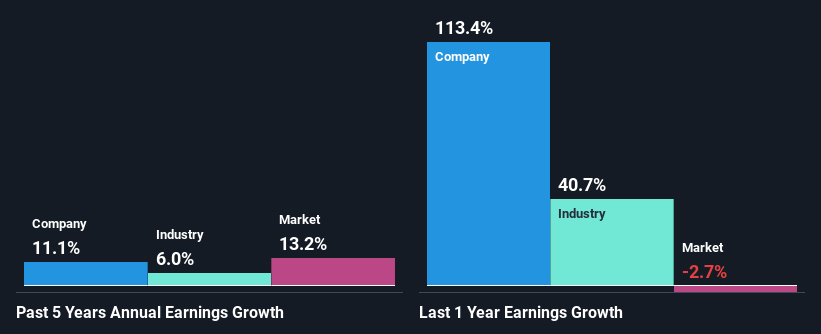Meta Platforms, Inc. (NASDAQ:META) Stock Has Shown Weakness Lately But Financials Look Strong: Should Prospective Shareholders Make The Leap?
It is hard to get excited after looking at Meta Platforms' (NASDAQ:META) recent performance, when its stock has declined 6.1% over the past month. But if you pay close attention, you might gather that its strong financials could mean that the stock could potentially see an increase in value in the long-term, given how markets usually reward companies with good financial health. In this article, we decided to focus on Meta Platforms' ROE.
ROE or return on equity is a useful tool to assess how effectively a company can generate returns on the investment it received from its shareholders. Put another way, it reveals the company's success at turning shareholder investments into profits.
Check out our latest analysis for Meta Platforms
How Is ROE Calculated?
The formula for ROE is:
Return on Equity = Net Profit (from continuing operations) ÷ Shareholders' Equity
So, based on the above formula, the ROE for Meta Platforms is:
31% = US$46b ÷ US$150b (Based on the trailing twelve months to March 2024).
The 'return' is the amount earned after tax over the last twelve months. Another way to think of that is that for every $1 worth of equity, the company was able to earn $0.31 in profit.
What Is The Relationship Between ROE And Earnings Growth?
So far, we've learned that ROE is a measure of a company's profitability. Depending on how much of these profits the company reinvests or "retains", and how effectively it does so, we are then able to assess a company’s earnings growth potential. Assuming all else is equal, companies that have both a higher return on equity and higher profit retention are usually the ones that have a higher growth rate when compared to companies that don't have the same features.
Meta Platforms' Earnings Growth And 31% ROE
To begin with, Meta Platforms has a pretty high ROE which is interesting. Secondly, even when compared to the industry average of 7.4% the company's ROE is quite impressive. This probably laid the groundwork for Meta Platforms' moderate 11% net income growth seen over the past five years.
Next, on comparing with the industry net income growth, we found that Meta Platforms' growth is quite high when compared to the industry average growth of 6.0% in the same period, which is great to see.
The basis for attaching value to a company is, to a great extent, tied to its earnings growth. The investor should try to establish if the expected growth or decline in earnings, whichever the case may be, is priced in. By doing so, they will have an idea if the stock is headed into clear blue waters or if swampy waters await. Is META fairly valued? This infographic on the company's intrinsic value has everything you need to know.
Is Meta Platforms Using Its Retained Earnings Effectively?
Meta Platforms' three-year median payout ratio to shareholders is 2.8% (implying that it retains 97% of its income), which is on the lower side, so it seems like the management is reinvesting profits heavily to grow its business.
Looking at the current analyst consensus data, we can see that the company's future payout ratio is expected to rise to 9.2% over the next three years. Therefore, the expected rise in the payout ratio explains why the company's ROE is expected to decline to 23% over the same period.
Conclusion
On the whole, we feel that Meta Platforms' performance has been quite good. Specifically, we like that the company is reinvesting a huge chunk of its profits at a high rate of return. This of course has caused the company to see substantial growth in its earnings. We also studied the latest analyst forecasts and found that the company's earnings growth is expected be similar to its current growth rate. Are these analysts expectations based on the broad expectations for the industry, or on the company's fundamentals? Click here to be taken to our analyst's forecasts page for the company.
Have feedback on this article? Concerned about the content? Get in touch with us directly. Alternatively, email editorial-team (at) simplywallst.com.
This article by Simply Wall St is general in nature. We provide commentary based on historical data and analyst forecasts only using an unbiased methodology and our articles are not intended to be financial advice. It does not constitute a recommendation to buy or sell any stock, and does not take account of your objectives, or your financial situation. We aim to bring you long-term focused analysis driven by fundamental data. Note that our analysis may not factor in the latest price-sensitive company announcements or qualitative material. Simply Wall St has no position in any stocks mentioned.

 Yahoo Finance
Yahoo Finance 
